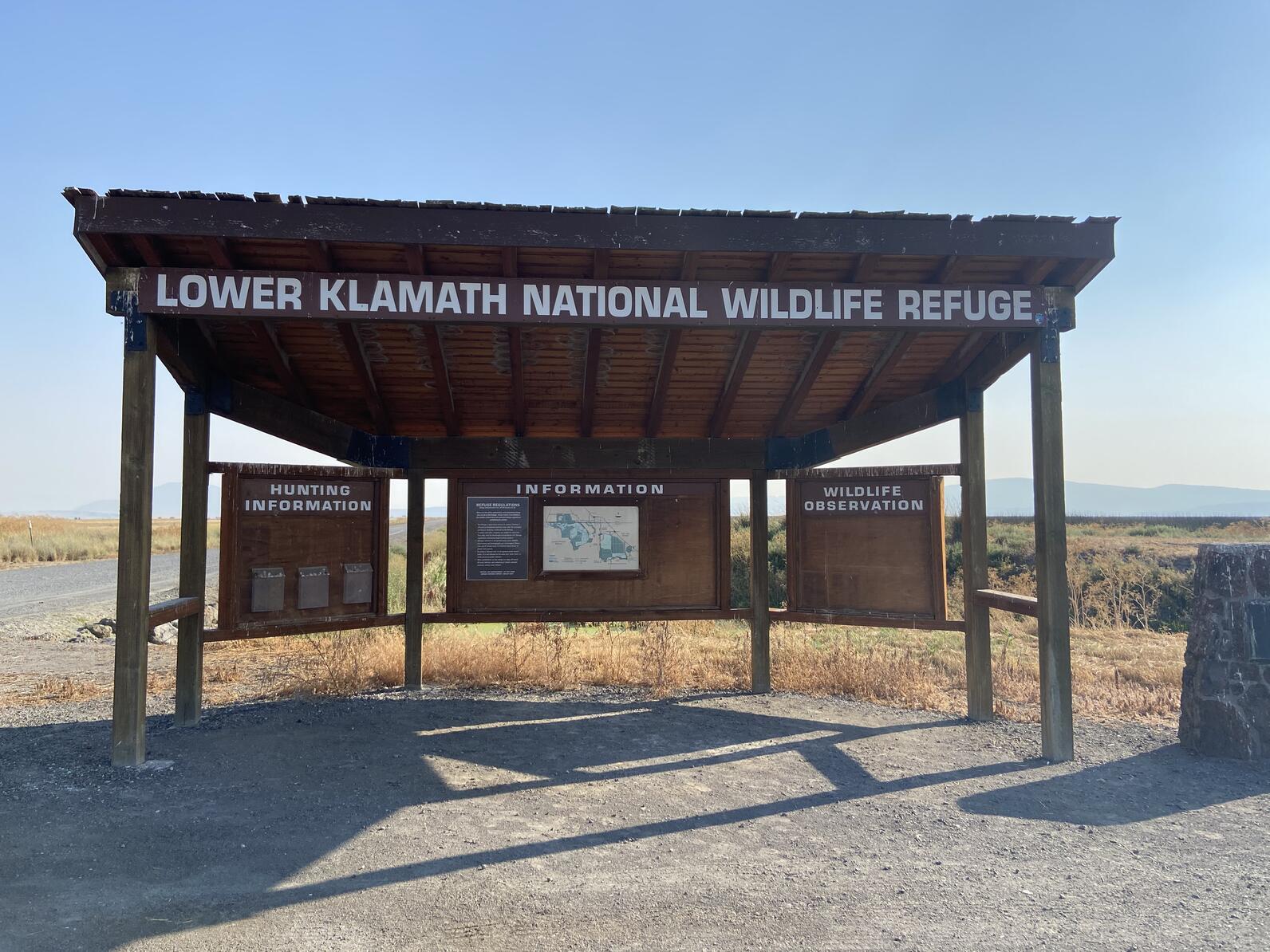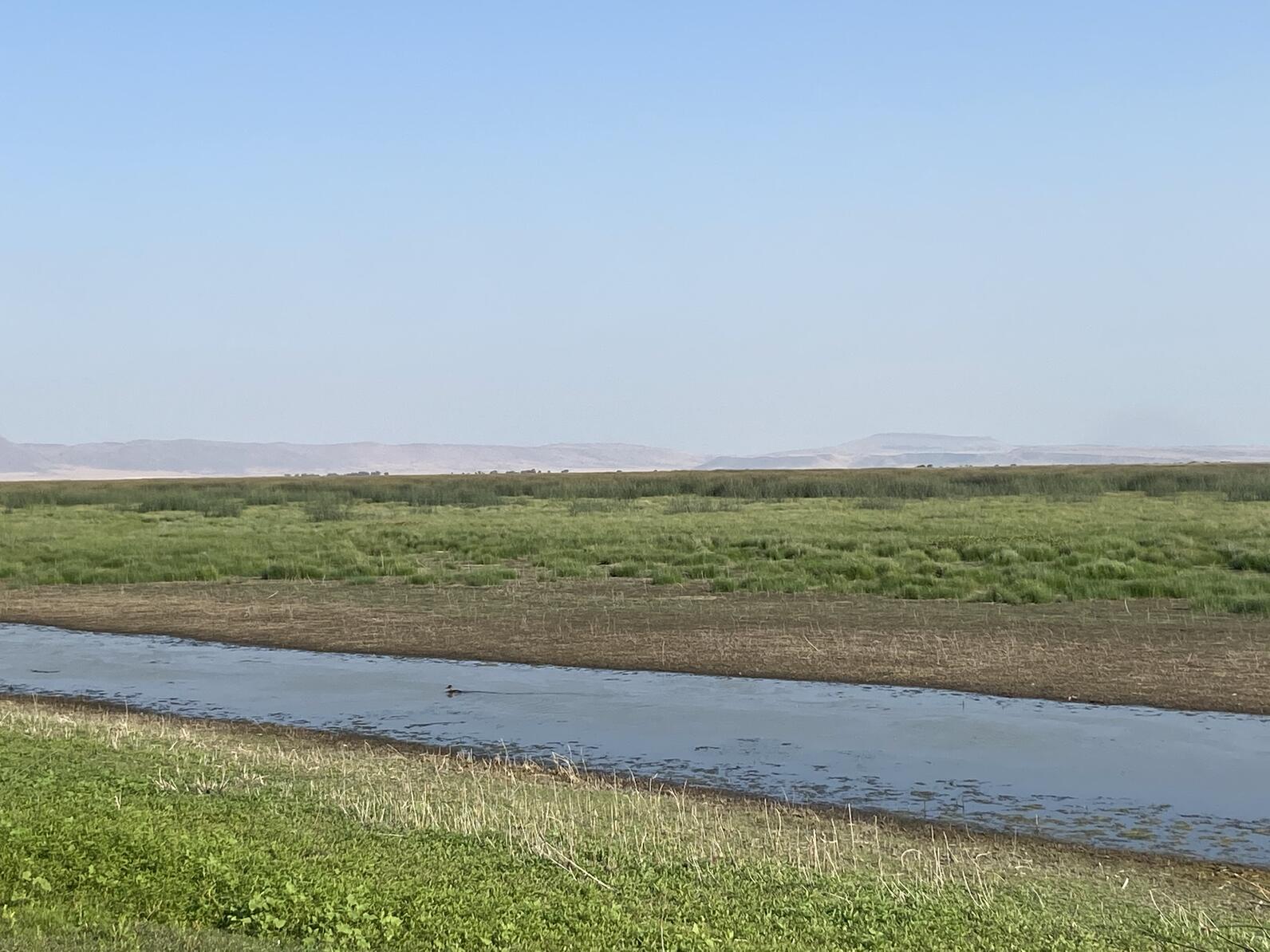
Highway 161 carries me along the Oregon and California border as I head towards Lower Klamath National Wildlife Refuge (NWR). I wish that I were visiting it under better conditions. Normally this is a place where birds gather in abundance, feasting and fattening up as they continue their migration along the Pacific Flyway. Instead, I am sadly here to witness a massive outbreak of avian disease that is wiping out tens of thousands of birds.
The Lower Klamath NWR is a “must see,” especially at the start of fall migration. Designated as an Important Bird Area by the National Audubon Society, the Lower Klamath NWR is one of a mosaic of refuges in the Klamath Basin, which together form an essential a pinch point along the Pacific Flyway, causing waterbirds to congregate in huge numbers during migration. Birds coming south from Alaska stop to rest and refuel before continuing their journey south to estuaries along the coast, the Sacramento and San Joaquin Valleys of California, and beyond as far as the tip of South America. These birds can’t complete this journey without places like Lower Klamath NWR along their route.

This year though, instead of broad sheets of water, green wetland stands, clouds of mosquitos, and throngs of noisy waterbirds – what greets me is a dry, barren landscape baking in the hot summer sun. Throngs of birds cram together in the few pools of hot, stagnant water that remain. Different species and guilds gather in a motley collection of unlikely neighbors; American White Pelicans waddle near elegant Black-necked Stilts and American Avocets, rather than spreading out across the open water and mudflats. These are exactly the kinds of conditions where disease can spread rapidly.
It is not surprising then, that a massive avian botulism outbreak is ravaging the birds of the Lower Klamath and some of the surrounding refuges. At last estimate, 40,000 birds have died in the last month due to botulism and thousands more are at an emergency “duck hospital” operated by staff from Bird Ally X, California Waterfowl Association, and the US Fish and Wildlife Service.
Avian botulism is a waterborne bacteria, Clostridium botulinum, that occurs naturally in many

wetlands, but becomes activated when hot temperatures heat the water. Overcrowding caused by insufficient water supplies have created ideal conditions for the bacteria to rapidly spread through the birds in Klamath. Birds eat infected food sources, become paralyzed and die, and in turn transmit it to other birds in a vicious cycle that spreads quickly across the wetlands. Overcrowding of birds combined with a lack of water supplies to maintain these wetlands and push clean water through these habitats worsens the outbreak as water sits and concentrates.
Making matters worse, some species of waterbirds are molting and will be unable to fly to better habitat for approximately a month. A 2016 study by Point Blue Conservation Science (Barbaree et al.) showed that dowitchers rely on Klamath Basin as a staging ground during molting, staying there for roughly 32 days between July and October while replacing flight feathers. The length and timing of their stay and the lack of flight feathers makes dowitchers and other waterbirds particularly vulnerable to disease outbreaks in this region.

This combination of deadly circumstances for the birds in Klamath has left biologists and refuge managers scrambling for solutions. To minimize the spread of the infection, biologists and volunteers are capturing thousands of sick birds every day and removing dead birds before they can infect others. They will have to keep this up until temperatures drop considerably, since it will take several nights of freezing temperatures to kill the bacteria. Refuge managers are also looking for new sources of fresh water to flood more habitat and spread the birds out, a difficult challenge in a dry year like this. Recent news of additional water being delivered by the Bureau of Reclamation offers some hope but it may be too little and it is definitely too late to help those birds that have already perished.
The only true, long-term solution is to ensure that the Klamath NWR has secure, reliable water supplies to maintain sufficient wetland habitat for the hundreds of thousands of birds that rely on it. This is not an easy fix since there is rarely enough water in the Klamath to meet the needs of tribes, farmers, ranchers, endangered salmon, and birds. Stakeholders have been working for years to reach an accord to accommodate all these important needs, but a satisfactory solution remains elusive and the wildlife refuges have not been highly prioritized. The tens of thousands of dead birds at Klamath are just a sign of the stakes and the need for a balanced solution now.
As I leave the refuge, I come across two birders standing in the heat, staring at the Lower Klamath NWR sign. I want to stop and warn them to not travel any further into the parched habitat because there isn’t anything to see, at least nothing pleasant. But I hold back because perhaps it is important for all of us to see or understand the tragedy that is happening right now in this remote corner of California and Oregon. It reminds us of how the refuges that make up the Pacific Flyway are the last, critical links on the long, but fragile chain of the Pacific Flyway. We are linked together through these birds and habitats, across borders, culture, and time, and that what we do at each of these places – like the decisions about who does and doesn’t get water – have lasting consequences for our birds, our people, and future generations of both.







